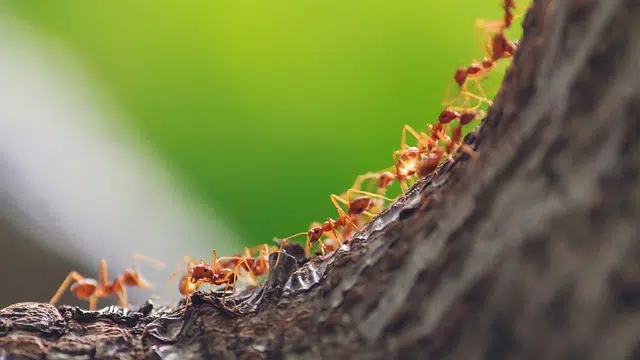
A succession of elements arranged in a line is known as a row.
A row is formed from the arrangement or online organization of various elements. It is a succession of human beings, animals or objects where each member is placed behind the other.
For example: “The line of young people waiting for the stadium doors to open is getting longer,” “I like to walk under the row of trees on this avenue,” “The row of lights that shone in the distance allowed him to discover "That the town was closer than I thought."
The formation of soldiers, military vehicles or artillery pieces that are placed one behind the other is also called a row. In combat, the line is formed perpendicular to the front. If the soldiers stand next to each other, it is called a line .
rows of ants
Observing ant colonies is an activity that is fascinating for many people, regardless of their level of knowledge or professional occupation. One of the first things we notice in their social behavior is that these living beings move in long lines, and this leads us to wonder why they do it.
The shortest answer is that ants guide themselves using pheromone trails left by others who have traced the path and reinforced by the entire group. It is a series of chemical clues that have a particular smell and that serve to maintain order. Generally, their long expeditions are aimed at searching for food, and thanks to this mechanism they can go far away without fear of getting lost.

Ants usually move in rows.
The importance of pheromones
The process that takes place to create this row begins when the solitary ants leave the nest in search of new shelters, other colonies to enslave them or food, among other resources. They do not need the pheromone trail to return to their nest, but rather they create it once they find something of interest, so that the army they recruit goes directly to the collection point and does not detour or pass through a dangerous area .
Different external factors can cause the "destruction" of the path traced by the first: the passage of an animal through this area, a rock fall or the harmful and intentional action of a human being. Although in some cases the ants are unable to orient themselves again, as long as the damage is not too great, they are able to reconnect both sections and continue with their work.
Rows in metallurgy and in zoology
A spinneret, on the other hand, is an instrument used by metalworking and silversmiths to achieve the reduction of metals to threads. This device consists of a plate that has small holes, through which the metal is passed to obtain the threads.
For zoology , finally, spinnerets are appendages of spiders that provide support to the glands responsible for producing the liquid that, when dried, forms silk. These rows appear in pairs and are found around the anus.
The number of spinnerets depends on the species of spider. Generally each spider has six rows, although some have two and others four. This part of their legs is the one that most characterizes this class of arthropods that attracts humans so much, either because they find it fascinating or because of the fear it provokes in the face of potential stings, some of which are fatal. According to certain studies, it is possible that spiders used these spinnerets long ago to help them climb and that throughout their evolution they have become the source of thread for their tissues.
